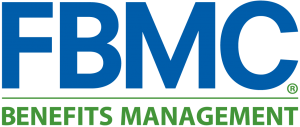November 2021 saw a record 4.5 million people resign from their jobs. This mass exodus means prospective employers will enjoy access to plenty of talent looking for a new career – but it also means added pressure to retain existing employees among increased competition. For businesses looking to hire a high-quality workforce, providing expanded financial wellness benefits may be a powerful attractor. 401(k)s and other retirement savings plans are a great place to start.
“A robust 401(k) benefits package offered by employers demonstrates an interest in employees beyond the workplace, proving that they want their employees to retire comfortably,” explains FBMC Retirement Service Manager Jim Matheu. “Knowing their employers have their best interest in mind helps build employee confidence while they’re in the workforce, ultimately leading to more qualified hires and higher retention rates.”
Even better, 401(k) benefits packages don’t demand substantial resources, making them a viable option for both big and small businesses looking to offer financial benefits. 3 key trends for 2022 will help employers develop plans that can attract new employees and engage current ones: financial education, personalization and auto-enrollment.
Driving Benefits Plan Enrollment through Education
One of the greatest challenges employers face with financial benefits is driving enrollment. Many employees may be overwhelmed by choice, or feel uncertain about which benefits are best for them. “A problem we are encountering is the number of 18–39-year-olds who are not putting enough away for a comfortable retirement, due to either feeling insecure in their ability to live on their current wages or lack of financial planning knowledge,” Matheu says.
Subsequently, older generations are also feeling the pressure: “We saw the highest increase in 401(k)plan participation than we have in the last 10 years in 2021. In our experience, we are seeing that the 40+ working population is realizing they haven’t put away enough in their younger years to retire and are now increasing their plan rates for the second half of their careers.”
To help drive financial plan enrollment, FBMC offers additional Financial Wellness benefits designed to support the needs of its clients’ employees. “We’ve partnered with a firm that specializes in financial planning. Participants can to call in to speak to a qualified financial advisor to help them plan for the future,” explains Matheu. The service is available to all employees of current FBMC clients, at no cost to the employee.
“Participation rate is currently very low, but we’re hoping to see more people use this valuable tool in the future,” Matheu says. In 2021, the savings expectations for comfortable retirement increased 10 percent. Contributing to savings plans as early as possible is vital, and employers can help drive action with clear lines of communication during enrollment that outline available tools and solutions like FBMC’s Financial Wellness program.
Personalization & Managed Retirement Savings Accounts
Rapidly shifting needs within health care, PTO, work-from-home flexibility and more have brought personalization of benefits to the forefront over the last few years. The trend applies to financial benefits as well. For example, Gen Z employees are unlikely to have the same priorities as Baby Boomers, especially when it comes to retirement. Benefits that can shift to accommodate those differences will likely see greater enrollment and engagement.
Managed accounts are just one way employers can offer personalization in the financial benefits area. Assets in the managed account category within defined contribution retirement plans more than doubled between 2012 and 2019, and the concept’s popularity continues to grow. These plans are customized for the individual employee, taking into consideration their needs, goals and financial circumstances. With a financial expert guiding them, employees feel more empowered to invest – and are likely to get more out of their savings as well.
Like other voluntary benefits, managed accounts are generally offered as an optional add-on to existing retirement plans and involve an additional fee. While the benefit is popular, employers considering this solution should remain mindful of costs, particularly when considering managed accounts as a means of engaging employees who are not yet contributing.
Auto-Enrollment and Escalation Legislation
The Securing a Strong Retirement Act of 2022, or Secure 2.0, passed in the House in March 2022 and will next head to the Senate. The Act focuses predominantly on auto-enrollment, and also includes legislation around student loan support and the required age for taking required minimum distributions from retirement accounts. Specifically, the bill would require most employers to offer auto-enrollment in retirement savings plans at an initial contribution rate of 3 percent with an automatic escalation of 1 percent annually up to 10 percent.
Auto-enrollment is a proven method of increasing plan participation. 90 percent of participants will remain in a retirement savings plan once they’re automatically enrolled, while 83 percent say they’re comfortable with automatic enrollment at a 6 percent rate. Given that 49 percent of Americans say they wish they’d started contributing to their retirement sooner, this may be a welcome solution.
The world of financial benefits is changing rapidly. FBMC’s team is here to help companies ensure their employees have access to the benefits they need to succeed both in and out of the workplace. To learn more, contact us today.




